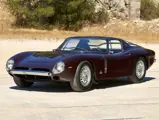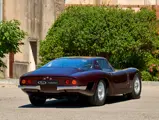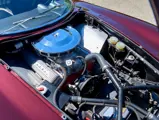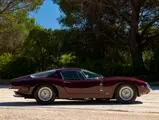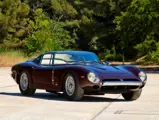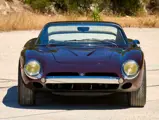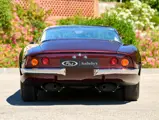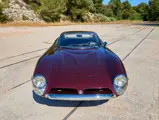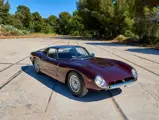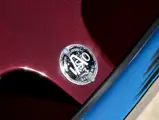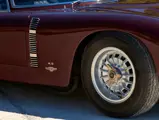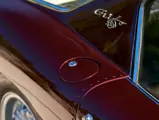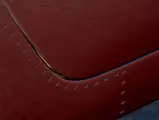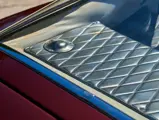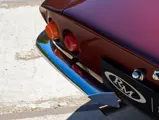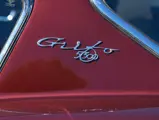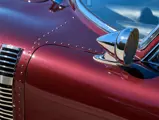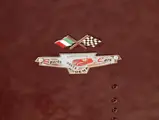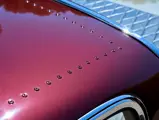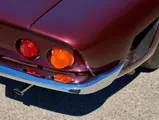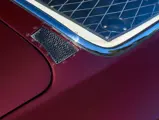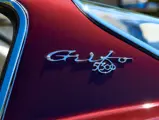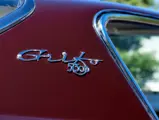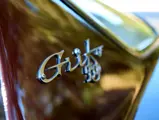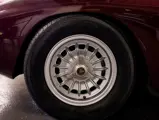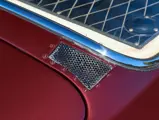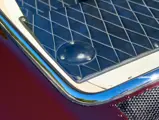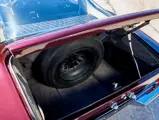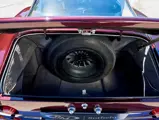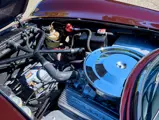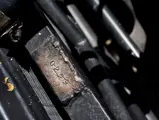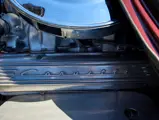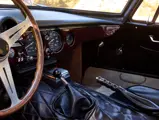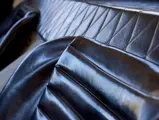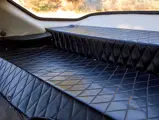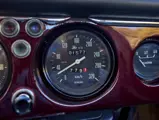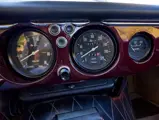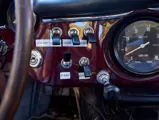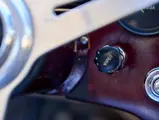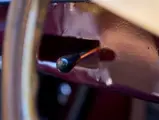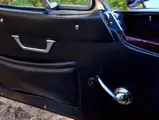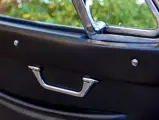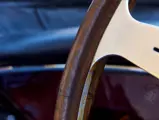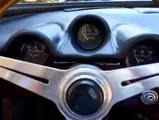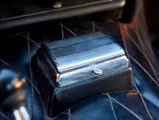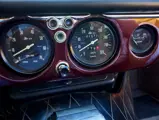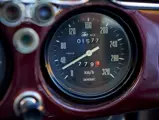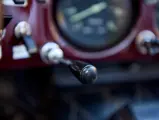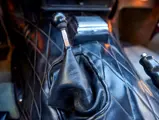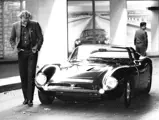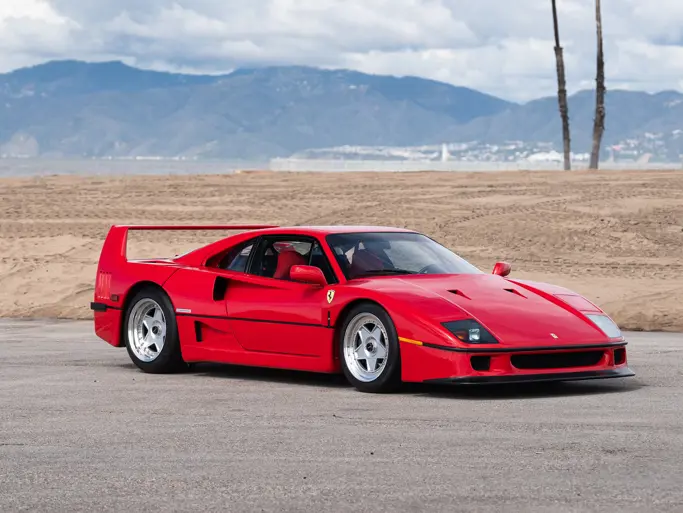The Guikas Collection
1965 Iso Grifo A3/C
{{lr.item.text}}
€1,805,000 EUR | Sold
 | Le Castellet, France
| Le Castellet, France
{{internetCurrentBid}}
{{internetTimeLeft}}

- First delivered to the renowned French singer, Johnny Hallyday
- The eighth made of 10 coveted ‘riveted’ Grifo A3/C models built in 1964, one of only seven to survive
- Known chain of ownership from new until the present day
- Repainted in original burgundy exterior and subject to interior refresh work in May 2021
- Livrée neuve au célèbre chanteur français Johnny Hallyday
- Huitième des dix fort convoitées Grifo A3/C rivetées construites en 1964, et l'une des sept survivantes
- Propriétaires successifs connus, depuis le premier jusqu'à l'actuel
- Repeinte dans sa teinte Bordeaux d’origine en mai 2021, avec un rafraîchissement de son intérieur
The Iso Grifo debuted in two contrasting packages, both revealed at the 1963 Turin Motor Show. The A3/L was positioned as the opulent GT form, while the A3/C was a finely tuned race car developed by Giotto Bizzarrini, who is notable as a leading engineer in the creation of Ferrari’s famous 250 GTO. The Iso Grifo A3/C was twice victorious in its class at Le Mans in 1964 and 1965, and both the race and roadgoing versions of the car soon earned a glowing reputation thanks to their attractive styling by Giorgetto Giugiaro at Bertone and powerful V-8 powertrains, in this case derived from the Chevrolet Corvette.
This example is a rare and highly sought after ‘riveted’ A3/C, constructed by Piero Drogo’s Carrozzeria Sports Cars of Modena. Employing construction techniques that used ‘avional’ (duralumin)—a special alloy of aluminium, copper, and magnesium that is lightweight and flexible but very difficult to weld—the bodies had to be riveted, in a similar fashion to an airplane, while allowing the car to keep overall weight down and tip the scales at 969 kilograms. Once the chassis and body were completed, Bizzarrini completed the cars at his small Autostar facility in Livorno.
This example was the eighth of 10 riveted A3/Cs made for 1964 and was delivered new to the Jean-Philippe Smet of Paris, better known as Johnny Hallyday. Deemed ‘the Elvis Presley of France’ by The New York Times, Hallyday had 100-plus million record sales and appeared in more than 30 films. Hallyday is pictured in and around the car, with Parisian temporary registration 7381 WW 75, in Paris, France, shortly after its manufacture. The car was registered on 27 October 1965 as 4958 RZ 75, and this registration would stay with the car until 2009.
Monsieur Hallyday enjoyed the ownership of the Iso Grifo AC/3 for around a year, until it was sold to Jean Claude Guillaume in February 1966. It was acquired by the Grand Garage Moliere in November 1966, and it would spend over two decades of ownership by HSH Prince Pierre Sanguszko, starting on 19 August 1968. Historic photographs show the car refinished in white in this period, featuring a central blue stripe. After that owner passed away, Daniel Marin—President of Ferrari France Pozzi, and a very close friend of HSH Prince Pierre Sanguszko—sold the car to Michel Hommell on 13 April 1992. At this point, the car was re-sprayed in red and displayed the car in his museum, Manoir de l'Automobile in Lohéac, Brittany, France. The car was then displayed with the number plate 728 GFS 75, even though it has never been registered with this number.
In 2009, Hommell sold chassis number B 0209 to Yvan Mahé. Prior to the sale, as per French regulation, a Contrôle Technique (equivalent to the UK MoT, and German TÜV) was performed on 21 February 2009, and at that time the car displayed only 25,484 km. It was then registered 214 EYC 77. Thereafter, it was bought by Pascal Perrier in 2012 before its acquisition by Mr. Guikas in 2014. At the 2017 Chantilly Concours, it was exhibited in the Great Musicians’ Cars class, where it garnered the ‘Special Award’.
The car received over €14,000 of workshop services in 2021, carried out by Carrosserie Mignard of Roanne, France. The garage stripped, prepared, and painted the exterior of the car, finishing the Iso in the burgundy shade in which it is seen today, also taking care to disassemble and refinish the matching-colour dashboard panel in the same paint application. Continuing inside the car, the workshop tended to several areas around the cabin, trimming the headliner, overhauling some rubber seals, and deep-cleaning certain areas, such as the carpet and dashboard.
It is rare than any Iso should be offered for sale, and the added appeal of its ownership history makes this riveted example an even more attractive option for collectors.
L'Iso Grifo fit ses débuts sous deux formes opposées, toutes deux dévoilées au Salon de Turin 1963. L'A3/L se voulait être une fastueuse GT, alors que l'A3/C était une voiture de compétition développée et soigneusement affûtée par Giotto Bizzarrini, connu pour être l'ingénieur en chef de la célèbre Ferrari 250 GTO. L'Iso Grifo A3/C fut deux fois victorieuse dans sa catégorie au Mans en 1964 et 1965. Les deux versions, tourisme et compétition, eurent tôt fait d'acquérir une brillante réputation du fait de l'attrait de leur style dû à Giorgetto Giugiaro, de chez Bertone, et de leurs puissants V8, dans le cas présent dérivé de celui de la Chevrolet Corvette.
L'exemplaire proposé est une rare A3/C rivetée, très recherchée, construite à Modène par la Carrozzeria Sports Cars de Piero Drogo. Sa carrosserie constituée de duralumin aviation, un alliage d'aluminium, de cuivre et de magnésium léger et souple mais très difficile à souder, devait être assemblée par rivetage, comme c'est le cas pour les avions, mais elle lui permettait de gagner du poids et de ne peser que 969 kg. Une fois le châssis et la carrosserie assemblés, Bizzarrini achevait la construction de la voiture dans son petit atelier de Livourne.
Cette voiture est la huitième des dix A3/C construites en 1964 ; elle fut livrée neuve à Paris à Jean-Philippe Smet, plus connu sous le nom de Johnny Hallyday. Qualifié par le New York Times d'Elvis Presley de France, Hallyday a vendu plus de cent millions de disques et est apparu dans plus de trente films. On l'a photographié à Paris dans et à côté de la voiture, peu de temps après sa livraison, alors qu'elle affichait pour immatriculation provisoire le numéro 7381 WW 75. Elle fut ensuite immatriculée le 27 octobre 1965 sous le numéro 4958 RZ 75, qu'elle a conservé jusqu'en 2009.
Johnny profita de son Iso Grifo AC/3 pendant environ un an, puis il la vendit en février 1966 à Jean Claude Guillaume. Elle fut ensuite acquise en novembre 1966 par le Grand Garage Molière, et passa à partir du 19 août 1968 une vingtaine d'années entre les mains de SAS le prince Pierre Sanguszko. Des photos de cette époque nous montrent la voiture repeinte en blanc avec une bande centrale bleue. Au décès de son propriétaire, la voiture fut vendue le 13 avril 1992 à Michel Hommell par Daniel Marin, président de Ferrari France - Pozzi et ami proche de SAS le prince Pierre Sanguszko. Elle fut alors repeinte en rouge et exposée dans le musée de Michel Hommell, le Manoir de l’Automobile de Lohéac, en Bretagne. Elle portait les plaques 728 GFS 75, alors qu'elle n'avait jamais été immatriculée sous ce numéro.
En 2009, M. Hommell vendit ce châssis B 0209 à Yvan Mahé. Conformément à la loi française, la voiture fut présentée le 21 février 2009 au contrôle technique, l'équivalent du MoT britannique ou du TÜV allemand ; elle n'affichait alors que 25 484 km. Elle fut réimmatriculée sous le numéro 214 EYC 77, puis elle fut vendue en 2012 à Pascal Perrier, avant d'être achetée en 2014 par M. Guikas. Elle fut exposée au Concours de Chantilly 2017 dans la catégorie des voitures de musiciens célèbres et y remporta le Special Award.
Elle bénéficia en 2021 de plus de 14 000 € de travaux d'entretien, effectués par la Carrosserie Mignard de Roanne (France). Ce garage décapa, prépara et repeignit l'extérieur de la voiture dans la teinte bordeaux qu'elle arbore maintenant ; sa planche de bord fut démontée avec soin et repeinte dans la même teinte. A l'intérieur également, l'atelier apporta ses soins à différentes parties de l'habitacle : il retendit la garniture de pavillon, remit en état certains joints et nettoya en profondeur des composants tels que le tapis et la planche de bord.
On voit rarement une Iso mise en vente ; par ailleurs, l'intérêt supplémentaire que son historique de propriété lui confère vient renforcer l'attrait que cet exemplaire riveté exercera sur des collectionneurs.

